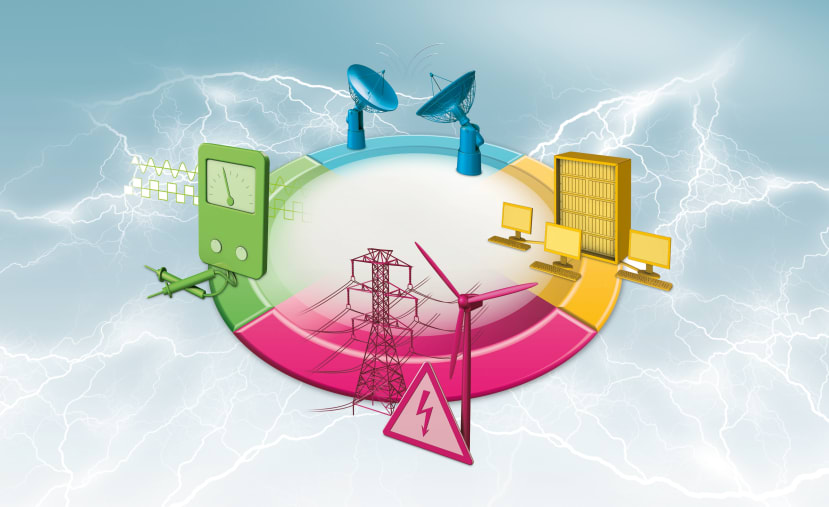SURGE PROTECTION: Wiring regs amendment affects “Safety Services”
Follow articleHow do you feel about this article? Help us to provide better content for you.
Thank you! Your feedback has been received.
There was a problem submitting your feedback, please try again later.
What do you think of this article?
BS7671 more commonly known as the “wiring regs”, or even just “the regs” is produced by the Institute of Engineering & Technology (IET) and is a British standard for the installation of electrical wiring. It is arguably the most important document for UK electricians. The regulations apply to the design, erection and verification of electrical installations and also include additions and alterations to existing installations.
Although technically, it is not a legal document, it does provide valuable guidance and information for anyone working on an electrical installation. Such installations need to be designed and installed to the latest regulations to ensure the protection of persons, livestock and property, and it is this that is the main reason surge protection has become more important and guidelines less vague since the 18th edition of the regs went live in January 2019.
In March of 2022 Amendment 2 of the 18th Edition was released and there were some subtle changes with regard to surge protection.
In short, Amendment 2 now lists 3 “Shall Be's” when considering if surge protection is needed……
The regs state:
“Protection against transient over-voltages shall be provided where the consequence caused by over voltage could result in:
- Serious injury to, or loss of, human life
- Failure of a safety service, as defined in Part 2
- Significant financial or data loss
For my money, the second on the list relating to safety service is a significant addition. Part 2 of the regs defines a safety service as:
Safety service - An electrical system for electrical equipment provided to protect or warn persons in the event of a hazard, or essential for their evacuation from a location.
Quite clearly this would affect all public buildings or installations where there is a safety system installed to protect people. That would include fire alarm systems, emergency lighting, CCTV, public address (PA) or tannoy systems used in the event of an emergency evacuation. The kind of system is commonplace in hotels, airports, public transport, museums, libraries, schools and colleges to name just a few. Such safety services have not been explicitly mentioned in the wiring regs up until now.
Generally, the discussion of surge protection in the wiring regs tends to concentrate on surge protection of the power networks. In general terms, this nearly always means a Type 1 lightning arrestor in the main switchboard, type 2 surge protective devices (SPD) in sub-distribution panels and a type 3 SPD in front of more sensitive “end of line” equipment.
But for a complete protection concept all conductors should be considered, such as signal lines, comms lines and telecom cables. This is particularly important when you consider a safety system such as a typical fire alarm system. In this case, it is not only the power cables into the panels that are critical to their operation. Most modern systems consist of a number of networked fire panels, each with one or more low voltage loop circuits on which are various “loop” devices. Examples of loop devices are call points, smoke detectors, heat detectors, air-aspirating detectors, beacons and strobes and sounders. All components that are an integral and critical part of a fire detection system.
A nearby lightning strike raises the ground potential and can induce lightning surge currents in any conductors in the vicinity (which could be a few kilometres away from the strike point) that go into or out of the fire panel and could damage the fire alarm panel itself or some or all of the loop devices. In short, all conductors should be protected to ensure the integrity of a critical safety service.
If in doubt a good principle that can be applied is the “protective circuit principle”. This describes a concept for complete protection against over-voltages and entails drawing an imaginary circle around the item to be protected. Surge protective devices should be installed at all points where cables intersect this circle. The area within the protective circuit is therefore protected in such a way that conducted surge voltage couplings are prevented.
The beauty of the protective circuit concept means that all required SPD types can be identified, not just ones for protecting the mains power cables.
So, in summary, for a complete protection concept that could include surge protection for the following….
- Power supply
- Measurement and control technology
- Information technology
- Transmitter and receiver systems
The Phoenix Contact range of surge protection devices (SPDs) available from RS Components is almost uniquely placed to offer solutions to protect not only the power systems but also the networking cables, loop devices as well as any telecom system that a security or fire alarm system uses.
If you would like to learn more about surge protection, the causes of over-voltages, how they propagate, what the effects of over-voltages are and more, then please click on the following link for info on Surge Protection basics.
Written by Mark Lloyd, Senior Product Manager - Power Supplies & Surge Protection


